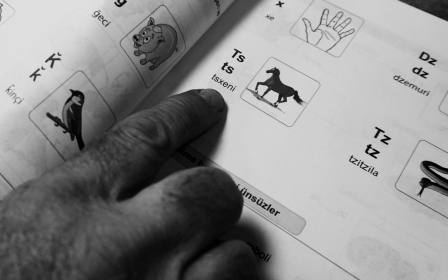Quiz: Test your knowledge of the Middle East's linguistic heritage

While Arabic, with its many distinct dialects, is the most widely spoken language in the Middle East, the region is also home to large populations of Persian, Turkish, Kurdish and Hebrew speakers, among others.
The spread of Islam in the seventh century slowly established the dominance of the Arabic language, first as a language of the ruling class and later as the spoken language of ordinary people.
For centuries it was the lingua franca of the region and was used as the dominant language of scientific, philosophical and religious discourse even by scholars who were not Arab.
A millennium earlier it was a fellow Semitic language, Aramaic, that served as the dominant language of the Levant and Mesopotamia, thanks in part to the rule of the Neo-Assyrian empire.
While the region is believed to be the home of the Semitic languages, which include Arabic, Hebrew and Aramaic, other language groups, such as the Indo-European and Turkic families are also firmly established.
In this quiz, Middle East Eye tests your knowledge of the region's languages both past and present:
Middle East Eye propose une couverture et une analyse indépendantes et incomparables du Moyen-Orient, de l’Afrique du Nord et d’autres régions du monde. Pour en savoir plus sur la reprise de ce contenu et les frais qui s’appliquent, veuillez remplir ce formulaire [en anglais]. Pour en savoir plus sur MEE, cliquez ici [en anglais].




